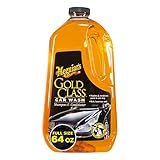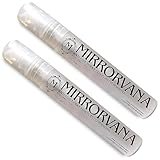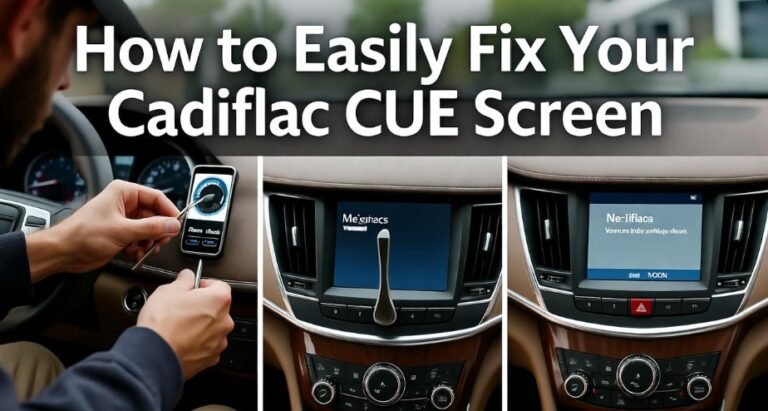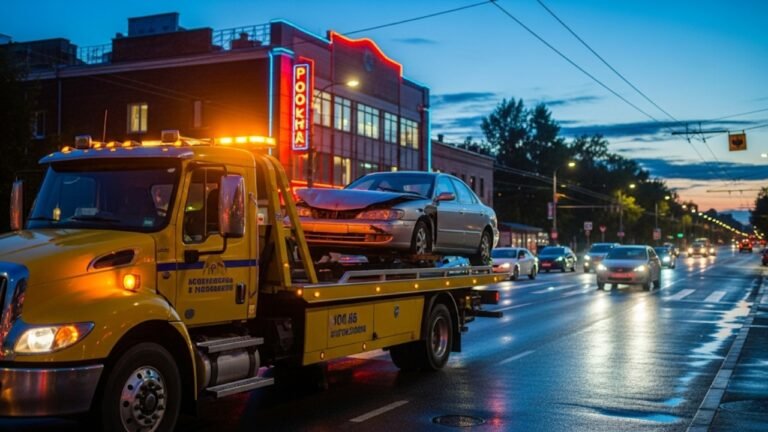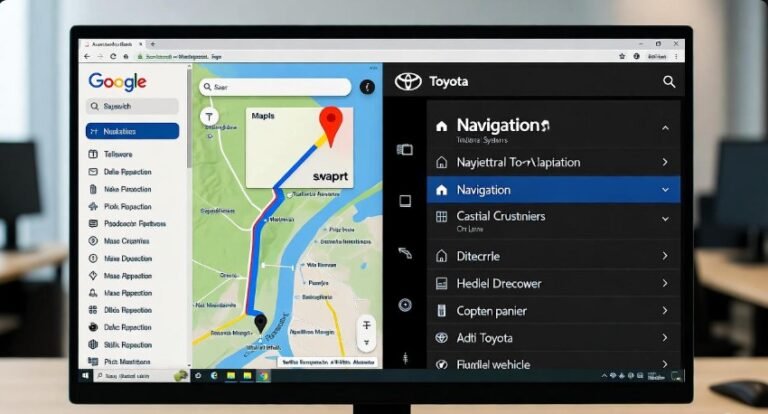Pulsar 180 Disc Brake Kit Price

Curious about the Pulsar 180 disc brake kit price? You’re likely looking for the most cost-effective and reliable options to upgrade your bike’s stopping power. This guide breaks down the typical costs, factors influencing the price, and where to find genuine parts, ensuring you make an informed decision for your safety and performance.
In This Article
- 1 Key Takeaways
- 2 Understanding Your Pulsar 180 Braking System
- 3 What’s Typically Included in a Pulsar 180 Disc Brake Kit?
- 4 Factors Influencing Pulsar 180 Disc Brake Kit Price
- 5 Estimated Pulsar 180 Disc Brake Kit Price Range
- 6 Where to Buy Pulsar 180 Disc Brake Kits
- 7 Considering Installation Costs
- 8 Front vs. Rear Disc Brake Upgrades
- 9 Pro Tips
- 10 Maintenance and Longevity of Disc Brakes
- 11 Frequently Asked Questions (FAQ)
- 11.1 Q1: What is the average Pulsar 180 disc brake kit price?
- 11.2 Q2: Do I need a specific kit for my Pulsar 180 model?
- 11.3 Q3: Can I convert my rear drum brake to a disc brake?
- 11.4 Q4: What’s the difference between organic and semi-metallic brake pads?
- 11.5 Q5: How long does a disc brake kit typically last?
- 11.6 Q6: What is the cost of installing a disc brake kit on a Pulsar 180?
- 12 Conclusion
Key Takeaways
- Discover Pulsar 180 disc brake kit price ranges.
- Identify parts included in common kits.
- Learn factors affecting disc brake pricing.
- Find reputable sources for genuine spares.
- Understand installation cost considerations.
Upgrading your motorcycle’s braking system is a smart move for safety and performance. If you own a Pulsar 180 and are considering a disc brake upgrade, understanding the “Pulsar 180 disc brake kit price” is your first step. It can be a bit confusing with so many options and brands available. You want to ensure you get quality parts without overspending. This guide will simplify the process, offering clear information on costs, what to expect, and how to make the best choice for your ride. Let’s dive into the details of Pulsar 180 disc brake kits.
Understanding Your Pulsar 180 Braking System
Before we get to the price, let’s briefly touch upon why disc brakes are a significant upgrade. Your Pulsar 180, depending on its specific model and year, might come with either drum brakes or a disc brake at the front, and sometimes even at the rear. Drum brakes, while functional, are generally less effective, especially in wet conditions or during aggressive braking. They can also overheat more easily. Disc brakes, on the other hand, offer superior stopping power, better heat dissipation, and more consistent performance. This makes them crucial for rider safety, especially in varied riding conditions across the USA.
What’s Typically Included in a Pulsar 180 Disc Brake Kit?
When you look for a “Pulsar 180 disc brake kit price,” it’s important to know what components are usually part of such a kit. A comprehensive kit will typically include the following essential parts:
- Brake Disc Rotor: This is the metal disc that rotates with the wheel.
- Brake Caliper: This houses the brake pads and clamps down on the rotor to slow the wheel.
- Brake Pads: These friction materials press against the rotor. Kits might include standard or performance pads.
- Brake Master Cylinder: This converts the rider’s lever force into hydraulic pressure.
- Brake Lines/Hoses: These carry the hydraulic fluid from the master cylinder to the caliper.
- Mounting Hardware: Bolts, brackets, and other small parts needed for installation.
- Brake Fluid Reservoir: Often integrated with the master cylinder.
Some kits might be more basic, focusing only on the rotor and caliper if you already have a compatible master cylinder and lines. Always check the product description carefully to understand exactly what’s included in the kit you are considering. This helps in accurately comparing prices and avoiding unexpected additional purchases later.
Factors Influencing Pulsar 180 Disc Brake Kit Price
The price of a Pulsar 180 disc brake kit can vary significantly. Several factors play a role in determining the final cost:
- Brand Reputation and Quality: Established brands known for performance and reliability often command higher prices. Generic or unbranded kits might seem cheaper but could compromise on quality and longevity.
- Material Quality: The type of metal used for the rotor (e.g., stainless steel, high-carbon steel) and the compounds used for brake pads (e.g., organic, semi-metallic, ceramic) affect both performance and price. Higher-performance materials generally cost more.
- Kit Completeness: As mentioned, a full kit with all necessary components will be more expensive than a partial kit.
- Type of Disc Brake: Fixed calipers tend to be more robust and expensive than floating calipers. The size and design of the rotor also impact cost.
- Compatibility: Ensure the kit is specifically designed for the Pulsar 180 model and year. Universal kits may require modifications, adding to the overall expense.
- Place of Purchase: Prices can differ between official dealerships, specialized motorcycle parts retailers, and online marketplaces.
- Origin of Manufacture: Parts manufactured in regions with higher production costs might be priced accordingly.
Estimated Pulsar 180 Disc Brake Kit Price Range
Pinpointing an exact “Pulsar 180 disc brake kit price” without specific context is challenging, as prices fluctuate based on the factors above and regional availability. However, we can provide an estimated range for common scenarios when purchasing in the USA:
| Category | Estimated Price Range (USD) | Notes |
|---|---|---|
| Basic/Generic Front Disc Brake Kit (Rotor + Caliper) | $70 – $150 | May require separate purchase of pads, master cylinder, and lines. Quality can vary. |
| Standard Branded Front Disc Brake Kit (Complete) | $150 – $300 | Typically includes rotor, caliper, pads, and sometimes master cylinder. Reputable mid-tier brands. |
| Premium/Performance Front Disc Brake Kit (Complete) | $300 – $600+ | High-quality brands, advanced materials, often includes braided steel brake lines and high-performance pads. |
| Rear Disc Brake Conversion Kit (If applicable for model) | $100 – $250 | Focuses on rear caliper, rotor, and mounting, assuming front master cylinder is available or can be adapted. |
| Individual Components (e.g., just a rotor or caliper) | $30 – $150+ | Price varies greatly by component and brand. |
It’s important to note that these are estimates. Always check current pricing from reliable retailers. For the most accurate “Pulsar 180 disc brake kit price,” it’s best to look at specific product listings from Australian brands like Bajaj (the manufacturer of Pulsar) authorized parts suppliers or reputable aftermarket motorcycle parts dealers in the USA.
Where to Buy Pulsar 180 Disc Brake Kits
Finding the right place to purchase your Pulsar 180 disc brake kit is crucial for ensuring you get genuine parts and fair pricing. Here are some reliable avenues:
Official Bajaj Dealerships
For the most authentic experience, visit an authorized Bajaj dealership in the USA. They will stock genuine Pulsar parts, ensuring perfect fitment and quality. While often the most expensive option, this guarantees you are getting OEM (Original Equipment Manufacturer) parts, which can be essential for maintaining your bike’s integrity and warranty.
Reputable Aftermarket Motorcycle Parts Stores
Many specialized motorcycle parts stores, both online and brick-and-mortar, carry a wide range of aftermarket disc brake kits and individual components. Look for stores that have a good reputation, offer clear product descriptions, and have positive customer reviews. These stores often carry brands that offer a good balance of performance and value. Some well-known US-based online retailers include RevZilla, Cycle Gear, and J&P Cycles, though their stock might vary for specific international models like the Pulsar 180.
Online Marketplaces
Platforms like Amazon and eBay can offer competitive pricing, but caution is advised. While you might find great deals, it’s essential to verify the seller’s reputation and ensure the product is genuine and compatible with your Pulsar 180. Look for sellers with high ratings and positive feedback specifically related to motorcycle parts. Always read product reviews carefully.
Specialized Indian Motorcycle Parts Suppliers
Since the Pulsar is an Indian brand, consider looking for specialized suppliers that focus on parts for Indian motorcycles sold in the USA. These suppliers might have a more extensive selection of Pulsar-specific components and knowledgeable staff who can guide you on the best options and the correct “Pulsar 180 disc brake kit price” for your needs.
Considering Installation Costs
The “Pulsar 180 disc brake kit price” typically refers to the cost of the parts alone. If you are not mechanically inclined, or if the upgrade involves complex modifications, you will also need to factor in the cost of professional installation. Here’s what you can expect:
- Labor Rates: Motorcycle mechanic labor rates in the USA can range from $75 to $150 per hour, depending on your location and the shop’s expertise.
- Installation Time: A straightforward disc brake kit installation might take 1 to 3 hours. If it’s a conversion from drum brakes or requires significant adjustments, it could take longer.
- Additional Parts/Fluids: Ensure your mechanic checks for and replaces brake fluid. If the kit doesn’t include all necessary lines or adapters, those will be additional costs.
Always get a quote from your mechanic before starting the work. A complete disc brake upgrade, including parts and labor, could range from $250 to $800 or more, depending on the kit chosen and the mechanic’s fees.
Front vs. Rear Disc Brake Upgrades
Most Pulsar 180 models come standard with a front disc brake. If your model has a drum brake up front, this is the most critical upgrade for stopping power. If your bike has a front disc but you’re considering a rear disc brake, this is often a more complex conversion.
Front Disc Brake Upgrade
This is the most common and impactful upgrade. The “Pulsar 180 disc brake kit price” for the front is generally more standard. The primary goal here is improved stopping force and feel. You’ll find a wide array of options, from direct replacements to performance-oriented kits.
Rear Disc Brake Conversion
Converting a rear drum brake to a disc brake on a Pulsar 180 is less common and can be more involved. It might require:
- A rear disc brake caliper.
- A rear brake master cylinder.
- A rear brake disc rotor designed to fit your rear wheel hub.
- Custom mounting brackets.
- Appropriate brake lines.
Because of the potential need for custom fabrication or adaptation, rear disc conversion kits might not be readily available off-the-shelf for all Pulsar 180 variants. The “Pulsar 180 disc brake kit price” for a rear conversion, if parts can be sourced, will likely be higher than a front upgrade due to complexity.
Pro Tips
When upgrading your brakes, always consider replacing your old brake fluid with fresh, high-quality DOT 4 brake fluid. This ensures optimal performance and longevity of your new braking system. Also, ensure proper bed-in procedures for new brake pads and rotors to achieve maximum stopping power.
Maintenance and Longevity of Disc Brakes
Once you’ve invested in a new “Pulsar 180 disc brake kit price,” proper maintenance is key to ensuring its longevity and consistent performance. Regular checks are vital:
- Brake Pad Wear: Inspect your brake pads regularly. Replace them when they reach the wear indicator marks. Worn-out pads can damage the rotor.
- Rotor Condition: Look for signs of warping, scoring, or excessive wear on the disc rotor. A damaged rotor needs immediate replacement.
- Brake Fluid: Brake fluid absorbs moisture over time, which reduces its boiling point and can lead to brake fade. It’s recommended to flush and replace brake fluid every 1-2 years. The U.S. Department of Transportation (DOT) provides guidelines on brake fluid standards. You can find more information on their National Highway Traffic Safety Administration (NHTSA) website.
- Calipers and Lines: Check for any leaks around the calipers and brake lines. Ensure the caliper moves freely and isn’t seized.
Following a good maintenance schedule will not only keep your brakes working effectively but also prevent premature wear of more expensive components, ultimately saving you money in the long run.
Frequently Asked Questions (FAQ)
Q1: What is the average Pulsar 180 disc brake kit price?
The average “Pulsar 180 disc brake kit price” can range from around $150 for a standard, reputable brand kit to $300 or more for a premium performance kit, excluding installation.
Q2: Do I need a specific kit for my Pulsar 180 model?
Yes, it’s crucial to get a kit specified for your exact Pulsar 180 model and year. Fitment is critical for safety and performance. Always verify compatibility before purchasing.
Q3: Can I convert my rear drum brake to a disc brake?
Yes, it’s possible, but it’s often more complex and expensive than a front upgrade. It may require custom parts and professional installation. Availability of specific kits for rear conversion can be limited.
Q4: What’s the difference between organic and semi-metallic brake pads?
Organic pads offer good initial bite and are easier on rotors but wear faster and perform less well in extreme heat. Semi-metallic pads offer better heat resistance and longevity, suitable for more demanding use, though they can be slightly harder on rotors.
Q5: How long does a disc brake kit typically last?
With proper maintenance, brake pads can last anywhere from 10,000 to 30,000 miles, depending on riding style and material. Rotors often last much longer, potentially 50,000 miles or more, but should be inspected regularly for wear and damage.
Q6: What is the cost of installing a disc brake kit on a Pulsar 180?
Professional installation costs can vary widely, but expect to pay between $100 to $300 for labor, depending on the complexity and your location in the USA.
Conclusion
Upgrading your Pulsar 180 with a disc brake kit is a significant enhancement for safety and riding experience. By understanding the “Pulsar 180 disc brake kit price,” the components involved, and the factors influencing cost, you can make an informed purchase. Whether you opt for a genuine Bajaj part or a reputable aftermarket option, remember to prioritize quality and proper installation. Regular maintenance will ensure your new braking system performs optimally for miles to come, giving you greater confidence on every journey across the diverse landscapes of the USA.

